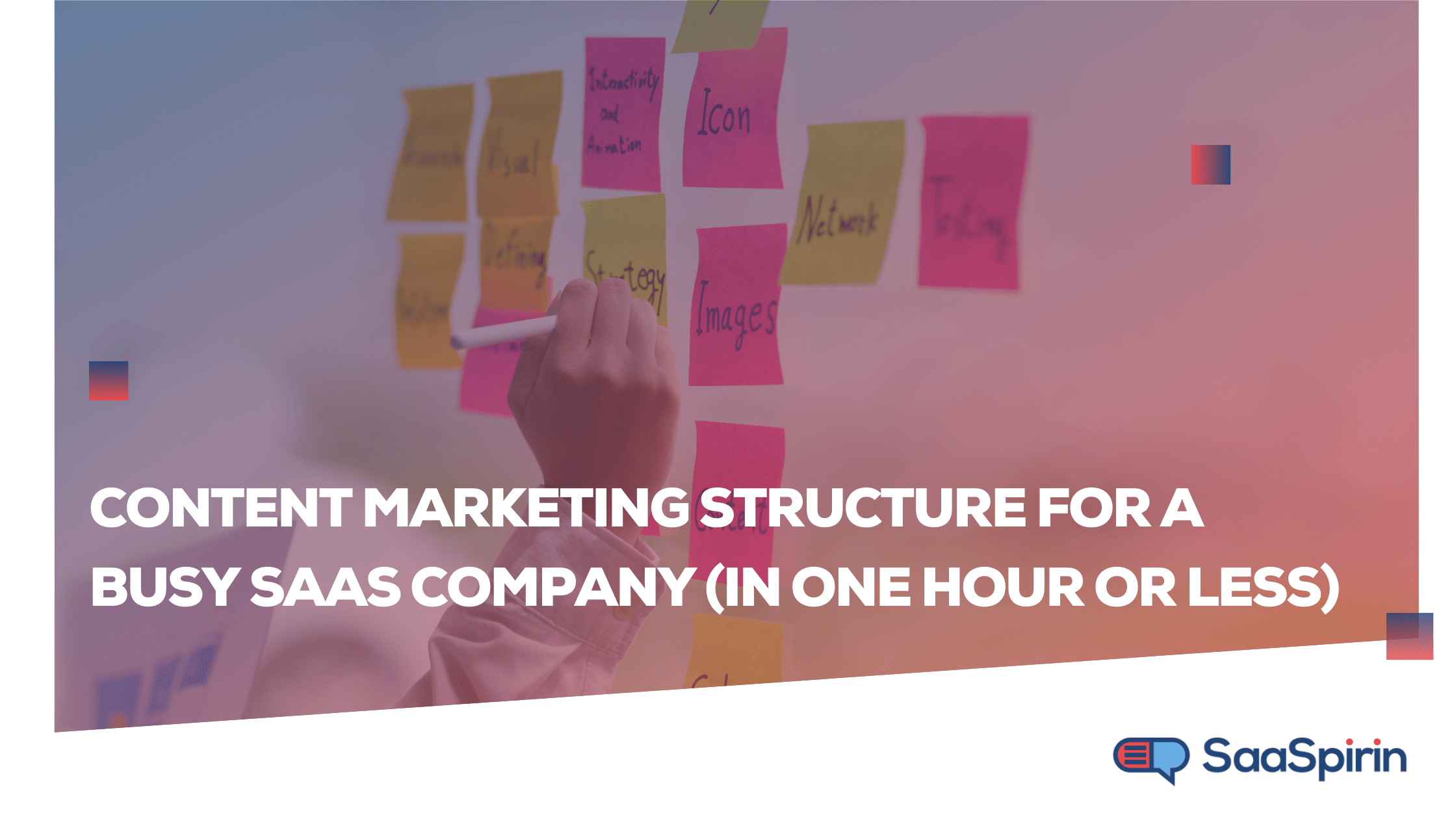The SaaS Sales Funnel and Your Blog
By Nicolas Jacobeus on October 22, 2020
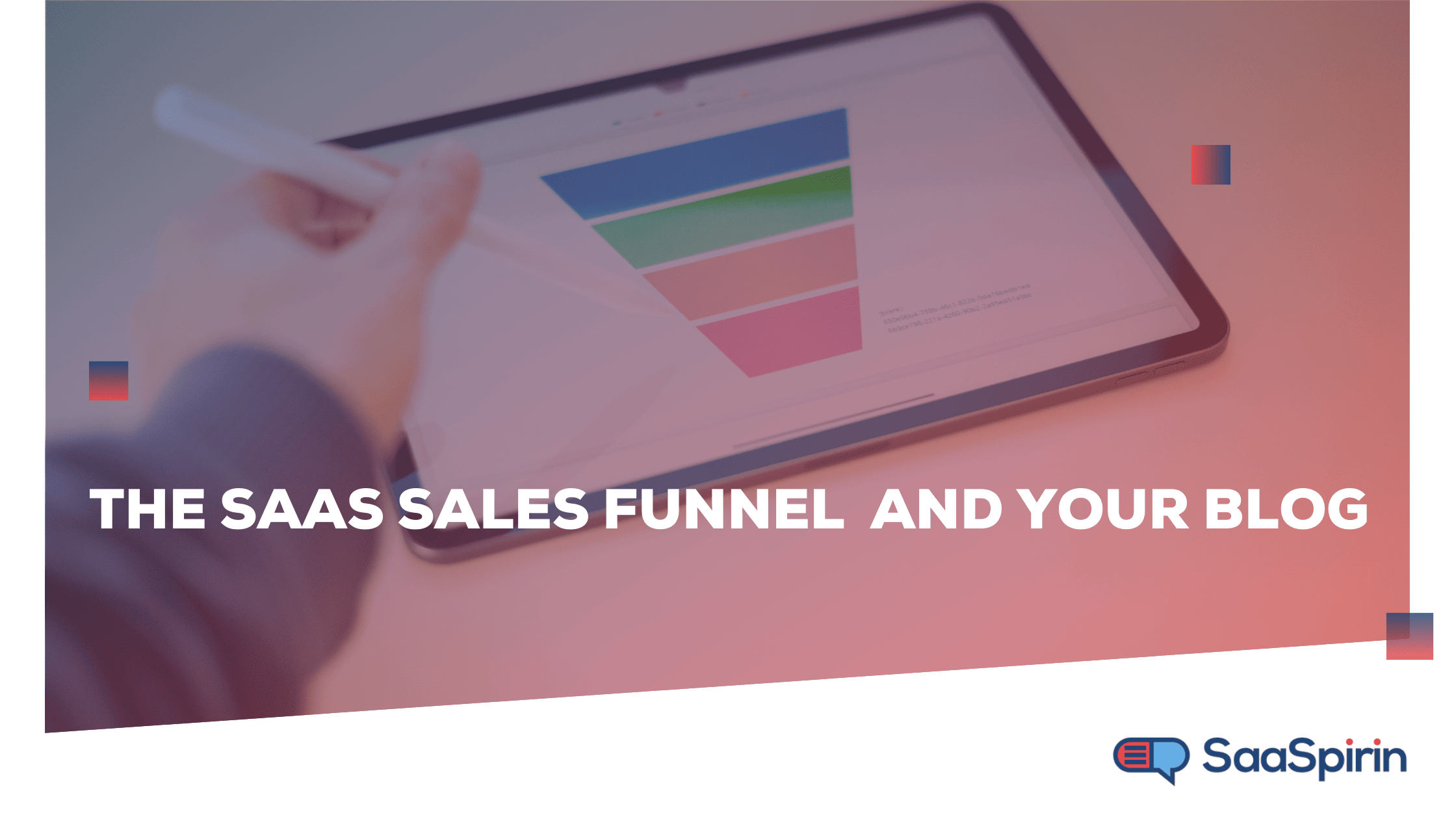
Growing a SaaS business requires you deliver the right information to the right people at the right time, so prospects can make the decision to subscribe to your product. The sales funnel provides a model that can help you do this with your content.
The SaaS sales funnel will show you the key stages a prospect must pass through before they can become a customer. Once you understand the funnel concept, you can apply it to your SaaS product to see the content and touchpoints you need. Then, you can align your blog and other content delivery vehicles along that path.
What is the SaaS sales funnel?
The SaaS sales funnel refers to the steps a prospect takes as they subscribe to your product and become a paying customer. The funnel shape represents the wide-to-narrow nature of that process.
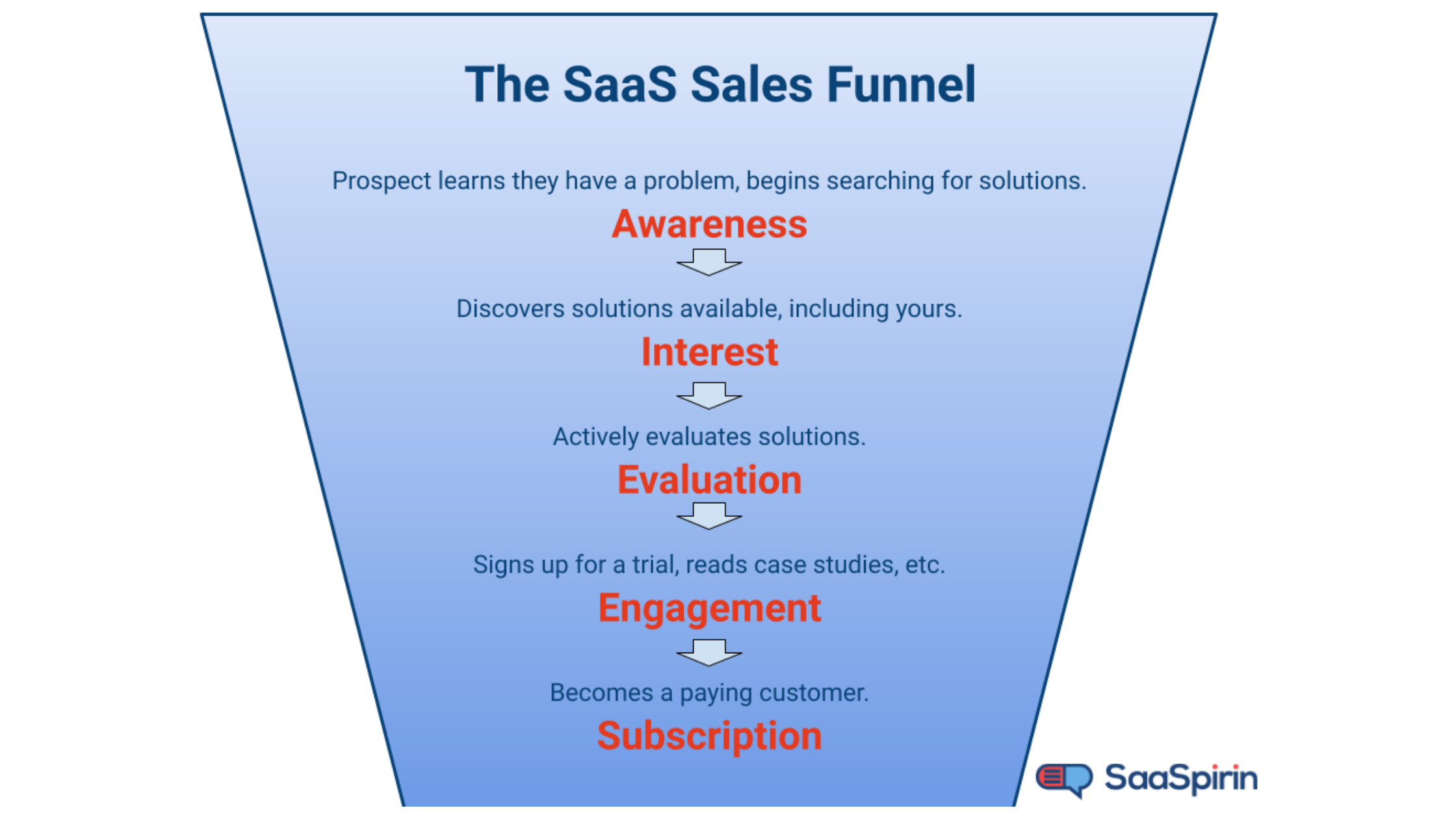
Your prospects begin with realizing they have a problem and then searching for solutions. Along the way, they find out about your offering and then finally sign up and implement it. Usually a great number of people enter the funnel at the top, narrowing to a much smaller group of people who reach the bottom and become paying customers.
SaaS companies can cultivate steps designed to move the most suitable prospects from one stage to the next. We’ll look at how you can do this using content in your blog.
Top of the sales funnel for SaaS companies
The funnel shape can also refer to the content types that your company uses to encourage people to move through the various stages: broad and far-reaching content at the top shifting to highly targeted content at the bottom.
The wide mouth at the top, called top-of-funnel or ToFu, represents a very broad stage where a great number of prospects can potentially enter your funnel as they become aware they have a problem. The tactics that a SaaS company employs at this stage are intended to generate awareness and interest.
SaaS companies most often use their blog as a ToFu tactic, aiming for broad exposure to their content. At this point, prospects are unfamiliar with your company and simply researching a problem or beginning to search for a solution. Your blog is an effective way for them to first learn of you.
ToFu blog content examples
SaaS companies that align blog content with their sales funnel often use the following types of blog posts to capture awareness among a wide audience.
- Thought-leadership and opinion blog posts
- Educational content that explains a related issue of interest to your audience
- Reports presenting original research
- Longform evergreen blog posts that cover a foundational topic in depth
Take for example this blog post by SpyFu, a SaaS company that provides SEO and PPC data: What is ToFu Content - And Are You Creating Enough of It?
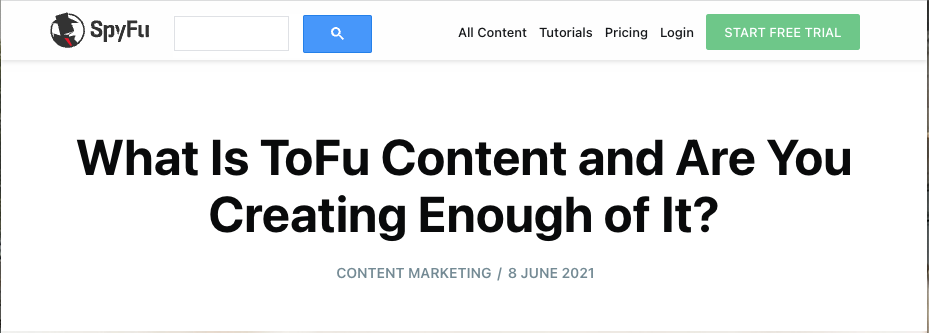
It brings in traffic from nearly 40 keywords around the topic of “ToFu content”, a topic that is important to marketers who may also be interested in a tool like SpyFu. By gaining awareness on this related topic, SpyFu can build name brand awareness and credibility, so when a prospect begins evaluating options, SpyFu is a step ahead of competitors.
Content distribution for ToFu blog content
The effectiveness of ToFu channels depends on casting a wide net.
SEO is unarguably the most effective distribution strategy for ToFu content. This is because organic search can reach a lot of people with minimal ongoing investment. While SEO requires resources in order to plan and produce optimized content, you can rely on that structure over and over. Then, when your ToFu content achieves significant rankings in search results, it will continue to grow traffic.
Social media can also provide an excellent platform for distributing your ToFu content, especially for highly shareable content like original research or opinionated thought leadership content.
Moving prospects down the funnel
After initial exposure through ToFu content, those prospects who are ready and suitable can move down to the middle portion of your funnel. If you can capture email addresses of interested readers at this point, you can send them more targeted middle-of-the-funnel (MoFu) content.
But since the ToFu stage is still very early in the sales funnel, you need to make sure you’re not asking for too much. Prospects at this stage are rarely ready to commit to a trial or consultation, for example, because they are still just learning about the problem and available solutions.
At this point, simple content upgrades or ‘subscribe to blog’ capture forms can be a low-commitment way for prospects to begin engaging with your SaaS company.
Middle and bottom of the sales funnel
The middle of a SaaS company’s sales funnel is where interest turns into a more serious evaluation of your product alongside competing solutions. Prospects at the MoFu stage have been whittled down to only those who think your product may work for them, but they’re still unsure.
Finally, only a handful of that large group of folks who entered the funnel originally will reach the bottom of the funnel (BoFu) and either subscribe to your SaaS product or a competitor’s.
You want to offer everything you can to help prospects verify that your solution is the right one for them, so they can move through the funnel via self-selection. To make decisions, they use content on your and your competitors’ websites as well as third-party content such as product reviews, stories published by peers, and opinions found in various places online. (For a deeper dive into selling to enterprise customers, which usually requires a sales force, see CXL’s article How to Create a Demand Funnel (for 44X Revenue.)
MoFu and BoFu blog content examples
There's a lot of crossover between MoFu and BoFu content, because the prospect is unlikely to follow a linear, prescribed path of content. Rather, as Gartner says, they “loop” across the purchase process as they evaluate solutions.
Generally, prospects in the mid-to-bottom of the sales funnel are looking to evaluate your SaaS product thoroughly, and the following blog content can help them do that.
- How-to blog posts with checklists, templates, etc.
- Tutorials and recorded demos
- Product or competitor comparisons
- Case studies and customer interviews
- Product feature and integrations updates
- White papers
- Webinars and videos
It’s not necessary to host all the above content in your blog – a knowledge hub or resource page may be more appropriate for some of this content. The key is to make it easily accessible on your site.
Distribution for MoFu and BoFu blog content
Prospects who take action at this stage are more qualified than those at the top of the funnel. Those who download a template or product data sheet, for example, may be ready to sign up for a free trial soon after. So you’ll need to use distribution channels that can help your mid-to-bottom-of-the-funnel content reach a target audience at just the right time.
- Paid ads that display based on previous action by the target
- Emails to segments of your list
- Organic search
Email automation allows SaaS businesses to target their content to specific segments of customers. For example, if you offer a lead magnet, you can ask prospects for information about their business. This allows you to next send them content specific to their particular industry or needs.
While you can (and should) email MoFu and BoFu content to those on your email list, you want your blog to be found via search by people in these stages, too. Searches for information as people evaluate SaaS software will become more targeted and specific.
Let’s look to SpyFu for an example again. While a prospect may have first heard of SpyFu through their ToFu content, now that same prospect has become interested in tools to study their SEO data. They’ve narrowed down their choices to a couple options, let’s say SEMRush and SpyFu, and want to see how those products stack up against each other. If the prospect searches on “spyfu vs semrush”, they’ll find several comparisons, including SpyFu’s own.
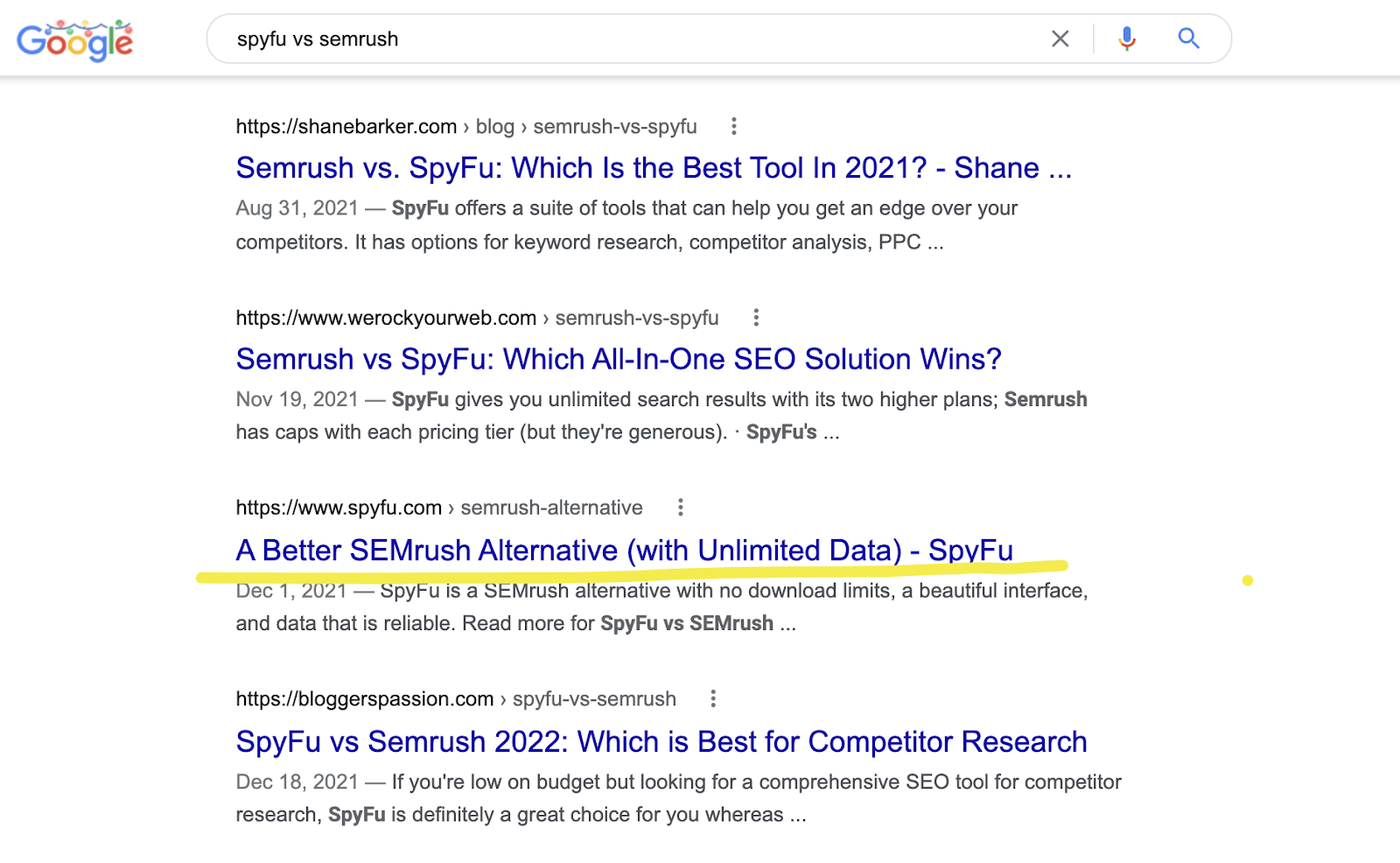
The factor that makes BoFu content so powerful is that it fills in specific knowledge gaps and answers crucial questions – it’s optimized for the buyer, not the channel.
A successful SaaS sales funnel starts with understanding your target audience
The first step in front of you is to know your target audience well. If you’ve found product-market fit, you’re on the right track. Now you have to apply that same principle to your blog content.
When you have a thorough understanding of the hopes and problems your prospects face, you’ll be well-positioned to blog about meaningful topics. Then, you’ll have excellent resources that you can use to optimize your sales funnel. Learn how our content marketing agency SaaSpirin helps you create the content that appeals to your audience throughout the SaaS sales funnel.
You May Also Like
These Related Stories
.png)
How to Write a SaaS Blog: A Step by Step Guide
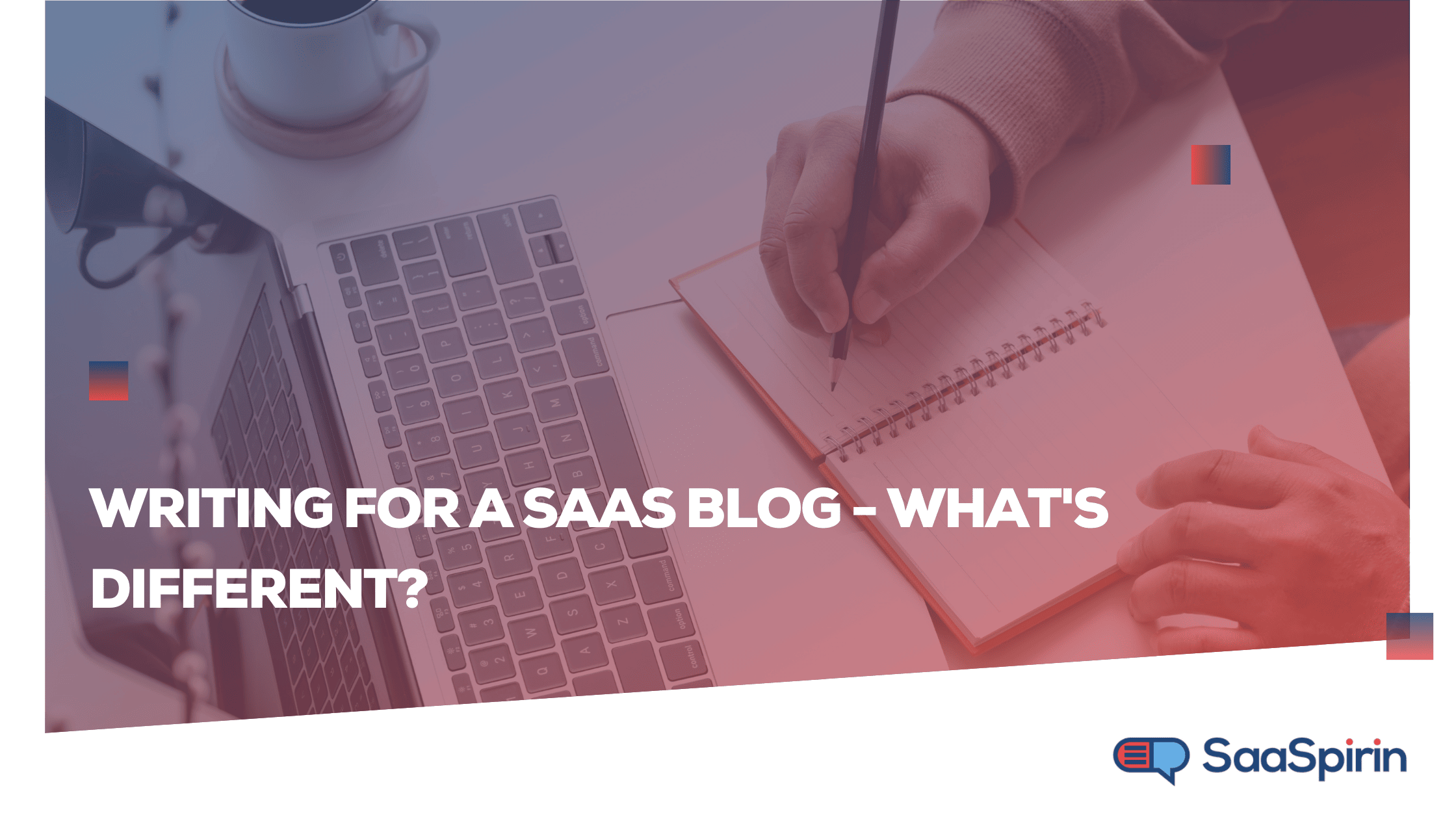
Writing for a SaaS Blog - What's Different?
